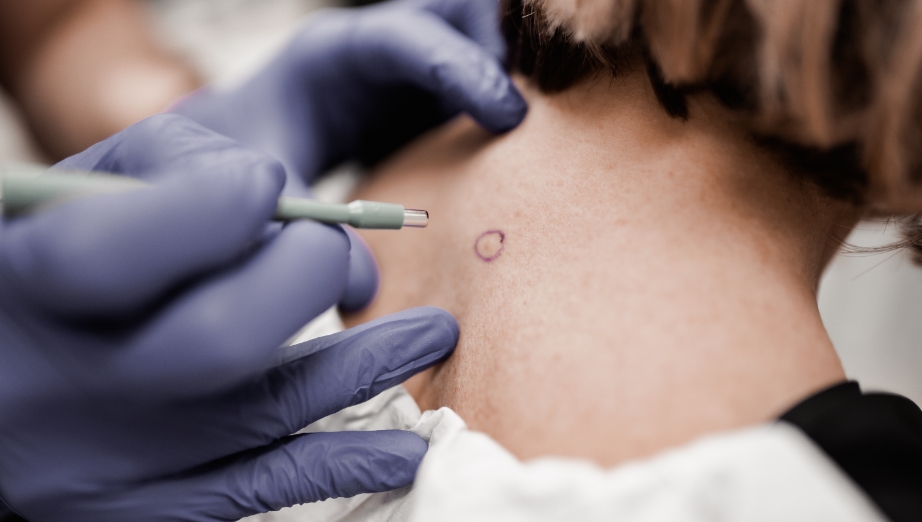Australia has one of the highest rates of skin cancer in the world, and sun exposure during younger years can be a contributing factor to skin cancer appearing later in life. Receiving a skin cancer diagnosis can be a challenging experience, particularly if the lesion is located in an area where its management may result in a visible scar. While many skin cancers are not malignant, they have the potential to become so over time, and a prompt assessment is always recommended.
Depending on the type location and size of the skin cancer, there are different options that can be discussed during consultation, including reconstructive approaches. Some minor skin cancers may be managed in a clinical setting using a local anaesthetic, while others may require more complex planning and reconstructive discussion.
Assessment and Diagnosis
For some cases, a biopsy is required to confirm the diagnosis before management is planned.
Your consultation will provide an opportunity to discuss the biopsy process and subsequent steps. We will review the available options, including surgical and reconstructive approaches, and provide information about what to expect before, during, and after the procedure.
A key part of this discussion involves understanding the likelihood of scarring, possible placement of incisions, and how these are planned with consideration of functional and aesthetic outcomes where clinically appropriate.
Skin Cancer Types
Basal cell Carcinoma (BCC): The most common type of skin cancer and generally considered to have a low risk of spreading. BCCs often appear as small, slowly enlarging spots that may ulcerate and heal repeatedly. Early management can help prevent further local growth.Squamous cell Carcinoma (SCC): The second most common form of skin cancer. SCCs can appear as scaly or crusted lesions that may bleed or enlarge over time. Early evaluation and treatment are important to reduce the risk of local spread.
Melanoma: This is the most aggressive form of skin cancer that requires prompt medical attention. Any mole or lesion that changes in colour, shape, or size should be professionally assessed. Prognosis depends on the depth and stage at which melanoma is identified and managed.
Moles (Naevus): Any mole or lesion that changes in colour, shape, or size should be professionally assessed. Prognosis depends on the depth and stage at which melanoma is identified and managed.

Understanding the Management Process for Skin Cancer
The management of skin cancer can vary from simple to complex. Depending on the planned approach, local or general anaesthesia may be used. For certain small or superficial lesions, options such as cryotherapy (freezing with liquid nitrogen) may be discussed. In other cases, an excision may be performed, a procedure in which the lesion and a margin of surrounding tissue are removed. Your clinician will discuss the process, what to expect, and how to care for the area afterward.
It is important to understand that what appears as a small lesion on the surface may extend deeper or wider under the skin.
The goal of surgical management is the complete removal of the affected tissue, which sometimes requires additional margins to ensure the surrounding skin is clear of cancerous cells.
All of this will be explained during your consultation, along with the associated risks, recovery expectations, and potential outcomes.
Discussing Reconstructive Options
When required, reconstructive options will be discussed as part of your management plan.
The nature of reconstruction depends on the size, location, and depth of the lesion.
Your clinician may discuss options such as using nearby healthy tissue (flap repair) or allowing the wound to heal with close monitoring
While every surgical procedure results in some degree of scarring, your surgeon will plan the incision placement with care to promote function and a natural alignment with surrounding features where possible.
Healing and scar appearance can vary between individuals and may change over time.
Post-Procedure Care and Expectations
Following surgery, it is common to experience mild tenderness, swelling, or discharge from the site.
Sutures are usually removed within one to two weeks, depending on the complexity of the procedure.
Your clinician will provide detailed instructions for aftercare, which may include:
- Keeping the area clean and protected
- Avoiding stretching or tension on the wound
- Protecting the area from sun exposure while healing
Scar tissue will typically mature over several months.
You will be advised on how to support healing and when to return for review.
If any signs of infection, persistent bleeding, or unusual changes occur, it is important to contact the clinic promptly.
Your Consultation at Shellharbour Skin
Understanding skin cancer and its management is an important first step.
At Shellharbour Skin, we provide comprehensive consultations to assess, discuss, and plan appropriate management strategies tailored to your diagnosis.
Your consultation will include:
- A detailed discussion of your medical history and health background
- A clinical assessment of the lesion or area of concern
- Review of potential management options, including risks and recovery expectations
Our goal is to ensure you have the information you need to make an informed decision in a professional and supportive environment.
If you have a question, get in touch and one of our staff will be in touch shortly.




